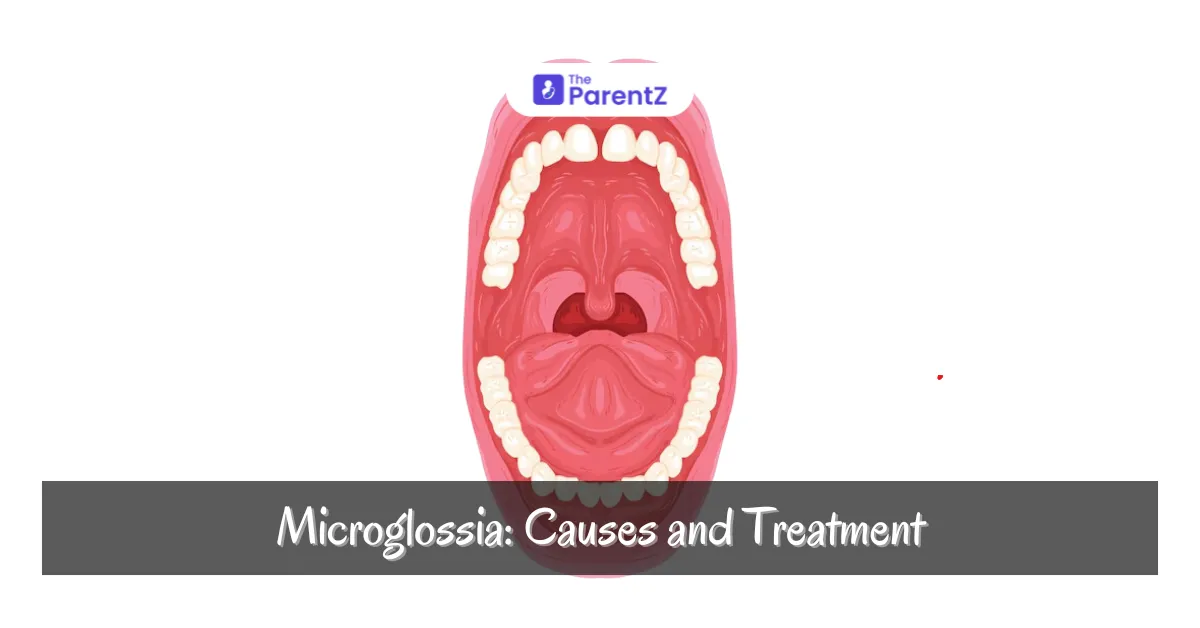Microglossia is a rare congenital anomaly where the tongue is abnormally small or underdeveloped. It often presents in association with other craniofacial abnormalities and syndromes. While relatively uncommon, the condition can lead to significant challenges in speech, feeding, and oral development. Understanding the genetic causes, signs, and treatment options for microglossia can help dental professionals provide the best care for affected patients.
Causes of Microglossia
Microglossia is typically a congenital condition, meaning it is present at birth. The exact cause is not always known, but it is often linked to genetic defects or syndromes. Some of the genetic causes include:
1.Oto-palato-digital syndrome: This is a genetic disorder that affects bone growth and development, including structures in the face and tongue.
2.Hanhart syndrome: Also known as hypoglossia-hypodactylia syndrome, it involves both limb and tongue malformations. This syndrome often leads to microglossia in affected individuals.
3.Pierre Robin sequence: This is a condition involving craniofacial anomalies such as mandibular hypoplasia (underdeveloped jaw) and cleft palate, and is often associated with a small or absent tongue.
4.Down syndrome (Trisomy 21): Although less commonly associated with severe microglossia, some individuals with Down syndrome may present with an underdeveloped tongue.
In addition to genetic defects, environmental factors during pregnancy, such as exposure to teratogens, infections, or trauma, may also play a role in the development of microglossia. However, the genetic component is the most well-established cause.
Signs and Symptoms
Microglossia can vary in severity, and the symptoms often depend on the size of the tongue and any associated conditions. The primary signs and symptoms include:
•Difficulty with speech: Due to the tongue’s role in articulation, individuals with microglossia may have trouble pronouncing certain sounds or speaking clearly.
•Feeding difficulties: Infants with microglossia may struggle with breastfeeding or bottle feeding, as the tongue is vital for creating suction.
•Dental malocclusion: The small size of the tongue can affect the position of the teeth, leading to bite issues such as open bite, crossbite, or underbite.
•Reduced oral function: The lack of tongue mobility or size can impact the ability to chew food properly, affecting overall oral function.
•Associated craniofacial abnormalities: In cases where microglossia is part of a syndrome, there may be other facial or jaw anomalies, such as cleft palate, micrognathia (small jaw), or other malformations.
Treatment Options
The treatment for microglossia largely depends on the severity of the condition and the specific challenges faced by the patient. A multidisciplinary approach is often required, involving dentists, orthodontists, speech therapists, and sometimes surgeons.
1.Speech therapy: Speech pathologists can help individuals with microglossia improve their articulation and communication skills. Therapy may include exercises to enhance tongue movement and compensate for size limitations.
2.Orthodontic treatment: Dental malocclusions caused by microglossia can be corrected using braces, retainers, or other orthodontic appliances. These treatments help align the teeth and correct bite issues, improving both function and appearance.
3.Surgical intervention: In severe cases, surgical procedures may be required to enhance the functionality of the oral cavity. These may include tongue reconstructive surgeries, such as tongue-lengthening procedures or soft tissue grafts. Jaw surgery may also be considered in cases of severe mandibular hypoplasia.
4.Feeding support: For infants, a speech therapist or occupational therapist may provide feeding assistance, especially if suction difficulties arise.
Prevention
Since microglossia is often associated with genetic conditions, there are no direct preventive measures. However, genetic counseling may be beneficial for families with a history of congenital anomalies or syndromes known to be associated with microglossia. Pregnant individuals should also be advised to avoid known teratogens, such as harmful medications or exposure to certain chemicals, as these can contribute to craniofacial development issues in the fetus.
Routine prenatal care, including ultrasound and other diagnostic tools, can help identify craniofacial abnormalities early, enabling prompt planning for postnatal interventions.
Conclusion
Microglossia is a rare but significant condition that can impact speech, feeding, and dental development. Its causes are often rooted in genetic syndromes, and its management requires a comprehensive approach that includes speech therapy, orthodontic care, and in some cases, surgery. By recognizing the signs early and implementing appropriate treatment plans, dental professionals can improve the quality of life for individuals affected by microglossia. While prevention is not always possible, early detection and intervention remain key to managing the condition effectively.








Be the first one to comment on this story.